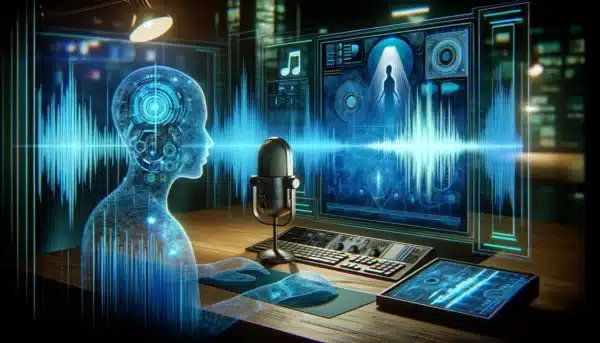Voice cloning, a remarkable feat in the realm of artificial intelligence, has revolutionized the way we perceive and interact with synthetic voices. This technology enables the creation of a digital replica of a voice actor‘s unique vocal characteristics, allowing for the generation of new speech content that closely resembles the original voice. In this post, we will delve into the intricacies of AI voice cloning, exploring its history, the underlying mechanics, and the limitations of this groundbreaking technology.
The origins of voice cloning can be traced back to the early days of speech synthesis research. In the 1980s, scientists began experimenting with concatenative synthesis, a technique that involved stitching together pre-recorded speech segments to generate new utterances. However, this approach lacked the naturalness and flexibility required for convincing voice replication. It wasn’t until the advent of deep learning and neural networks that voice cloning truly began to flourish.
The modern era of AI voice cloning relies heavily on deep neural networks, specifically autoencoder architectures. An autoencoder is a type of neural network that learns to compress and reconstruct data, capturing its essential features in a lower-dimensional representation. In the context of voice cloning, the autoencoder is trained on a large dataset of speech samples from a specific voice actor. The network learns to encode the unique characteristics of the voice talent’s speech, such as pitch, timbre, and prosody, into a compact representation known as a speaker embedding.
The process of voice cloning begins with data collection. The voice actor is recorded speaking a diverse range of sentences, covering a wide variety of phonemes and intonation patterns. This dataset serves as the foundation for training the autoencoder. The raw audio is preprocessed, typically by converting it into spectrograms or mel-frequency cepstral coefficients (MFCCs), which capture the essential frequency and temporal information of the speech signal.
During training, the autoencoder learns to compress the preprocessed speech data into a low-dimensional speaker embedding. This embedding encapsulates the unique vocal characteristics of the voice talent. The autoencoder is trained using a reconstruction loss, which measures the difference between the original speech and the reconstructed speech generated by the network. By minimizing this loss, the autoencoder learns to accurately capture and reproduce the voice actor’s speech style.
Once the autoencoder is trained, it can be used to generate new speech content in the voice of the cloned voice talent. This process involves conditioning a text-to-speech (TTS) system on the speaker embedding. The TTS system takes in the desired text and the speaker embedding as inputs and generates an audio waveform that mimics the voice actor’s speech. Popular TTS architectures for voice cloning include WaveNet, Tacotron, and FastSpeech, which employ deep neural networks to generate high-quality, natural-sounding speech.
One of the key advantages of AI voice cloning is its ability to generate speech with a high degree of naturalness and expressiveness. By capturing the nuances of the voice talent’s speech, such as intonation, rhythm, and emotional inflections, the cloned voice can convey a wide range of emotions and speaking styles. This opens up new possibilities for applications such as virtual assistants, audiobooks, and personalized content creation.
However, it is important to acknowledge the limitations of AI voice cloning. While the technology has made significant strides in replicating the voice actor’s speech, there are certain elements of the human voice that remain challenging to capture. For instance, the subtle variations in breath control, microphone technique, and the unique resonance of the voice talent’s vocal tract are difficult to replicate perfectly. Additionally, the cloned voice may struggle with extreme emotional ranges or highly dynamic speaking styles that deviate significantly from the training data.
Moreover, the ethical implications of voice cloning cannot be overlooked. The ability to generate speech that closely resembles a real person raises concerns about potential misuse, such as impersonation or the creation of fake audio content. It is crucial for the industry to establish guidelines and safeguards to ensure the responsible use of this technology, protecting the rights and privacy of voice actors.
In the end, AI voice cloning has emerged as a groundbreaking technology that enables the creation of digital replicas of voice talents’ speech. By leveraging deep neural networks and autoencoder architectures, researchers have developed methods to capture and reproduce the unique vocal characteristics of a voice actor. While the technology has made remarkable progress in generating natural-sounding speech, it is important to recognize its limitations and the ethical considerations surrounding its use. As voice cloning continues to advance, it is essential to strike a balance between the benefits it offers and the need to protect the integrity and privacy of the human voice.
– written by Claude









